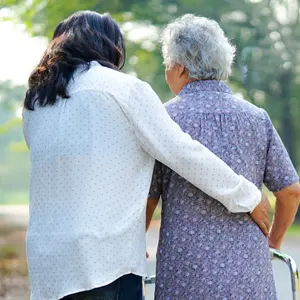

WELLthier Living and Aging

WELLthier Living and Aging
How Do Caregivers Develop Resilience?
Resilience is the ability to adapt to difficult situations. Resilient caregivers find the strength to continue to help others, even in the face of adversity. How do caregivers develop resilience?
Based on research and practice, I have created a model of caregiver resilience. In this model, caregiver resilience is developed across five domains represented by “R” words: Roles, Relationships, Realities, Rewards, and Readiness.

- Understanding ROLES involves making adjustments to an emerging caregiving story. Resilient caregivers learn what it means to fulfill a caregiving role. They know that the care receiver didn’t choose to be in this position, and they socially adapt to the changing conditions of their loved one.
- Honoring RELATIONSHIPS allows caregivers to nurture, and continue to be present, for the important people in their lives. While the functions of caregiving may change the nature of interactions between participants, the historic relational bond between caregivers and their loved ones motivate resilient caregivers to continue to be there.
- Confronting REALITIES enables caregivers to deal with the hard parts of caregiving. Instead of denial or discouragement, resilient caregivers realistically assess and strive to overcome the challenges they experience while caregiving. Although some things cannot be changed, acknowledging and embracing what is hard enables caregivers to endure and occasionally triumph.
- Cultivating REWARDS opens the mind and heart to the good parts of caregiving. Sometimes adversity reveals unexpected blessings, such as personal growth, moments of joy, paradigm shifts, or enhanced relationships. Resilient caregivers seek and recognize the good even as they struggle with the bad.
- Practicing for READINESS is how caregivers prepare themselves to offer appropriate support to their loved ones. Resilient caregivers are not innately endowed with the ability to deliver the tasks of caregiving; it is only through practice (trial and error) that they develop the sustainable capacity to do what is physically required for a loved one in need.
This model of caregiver resilience allows caregivers and the professionals who support them to review a current care situation, impose a frame on it, and assess the implications. It’s a learning model. By examining a care situation in this manner, the reflective caregiver or practitioner can identify problematic areas, formulate strategies for improvement, and evaluate progress over time.
REFERENCES
Caregiving Kinetics. (2021, February 4). How do caregivers develop resilience? https://caregivingkinetics.com/how-do-caregivers-develop-resilience/


 By
By




